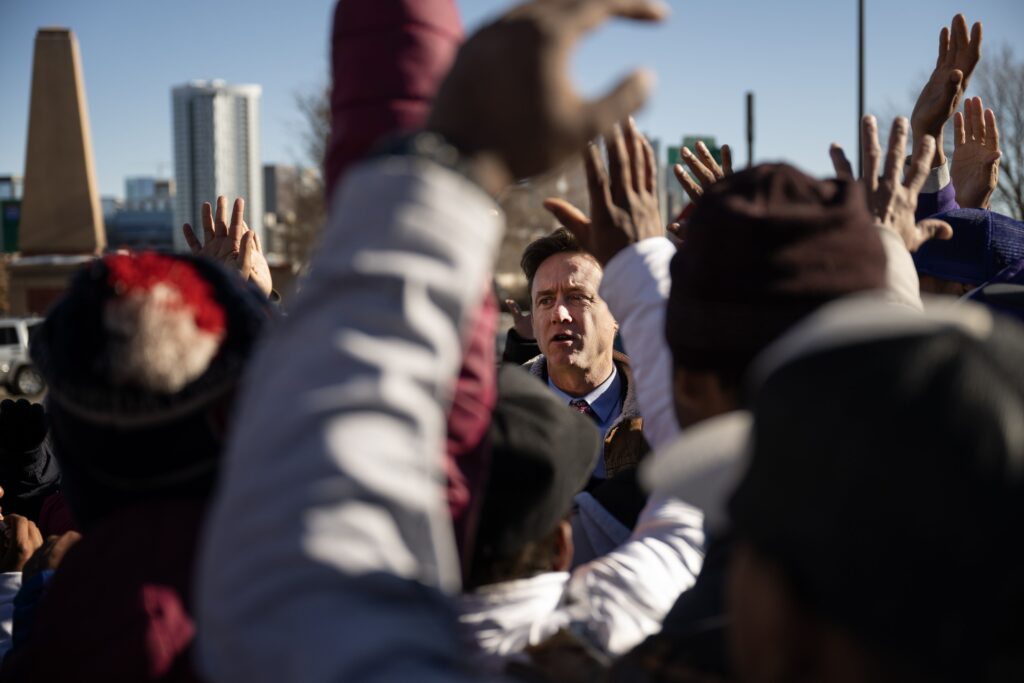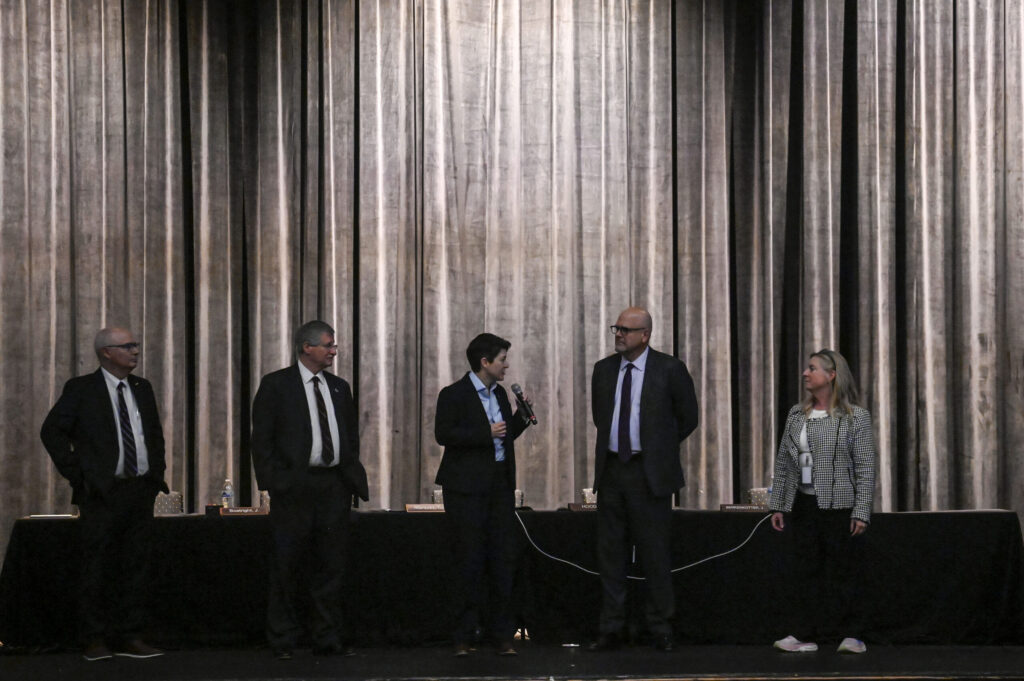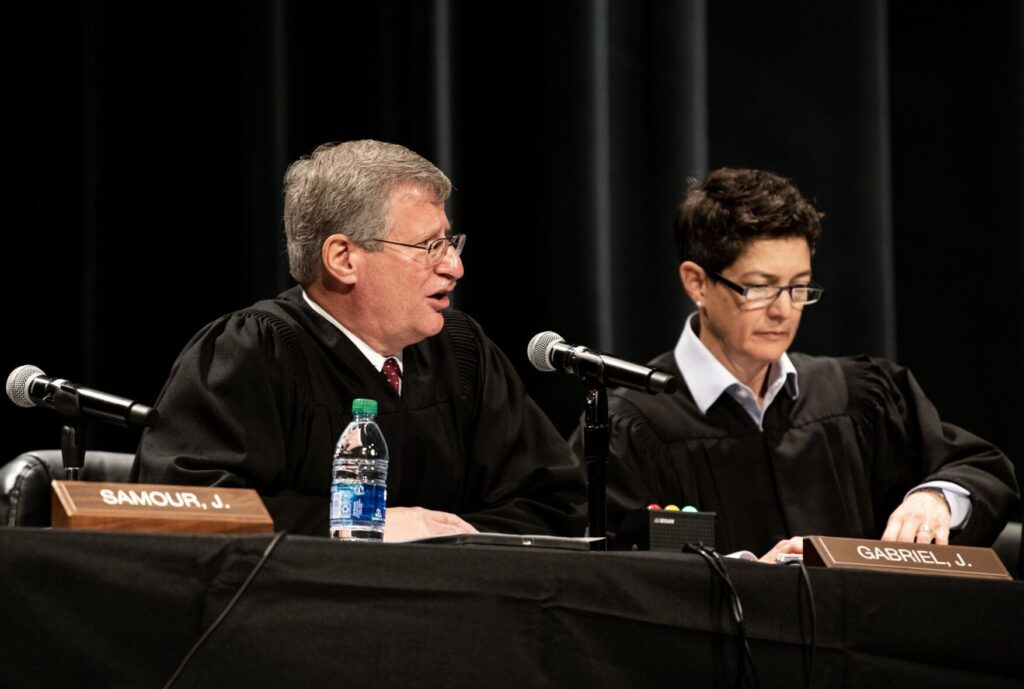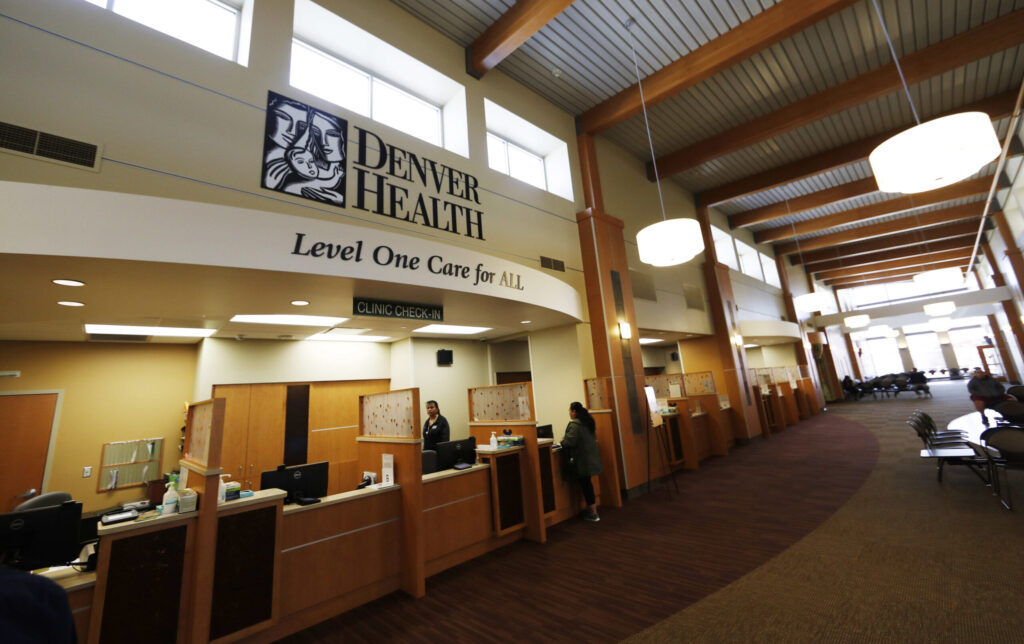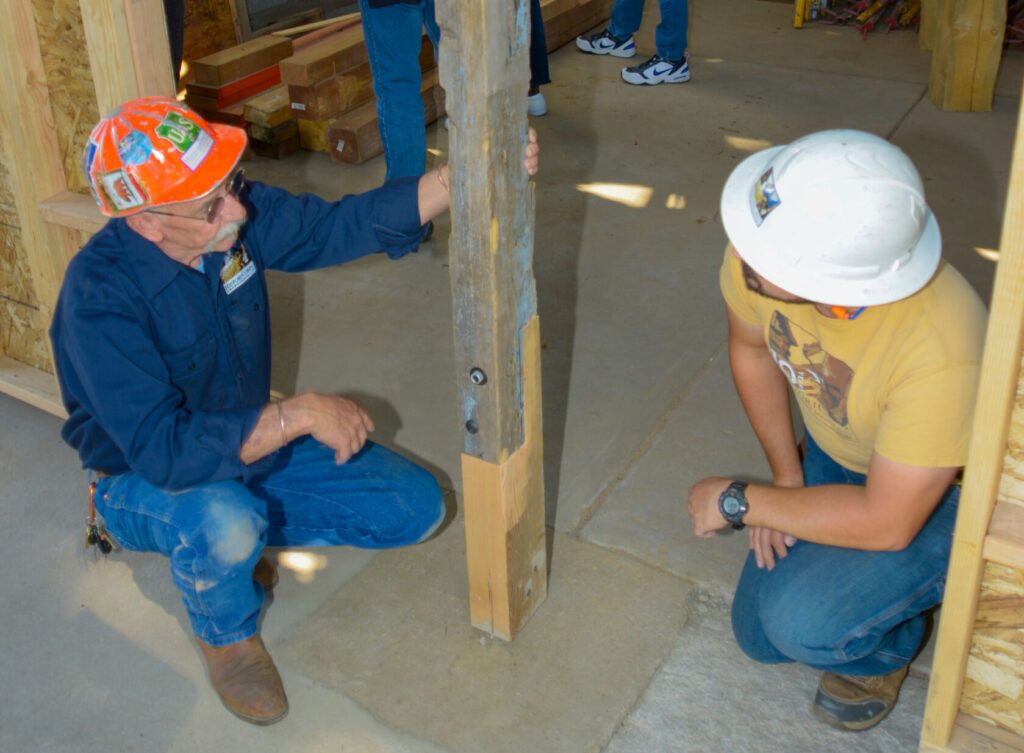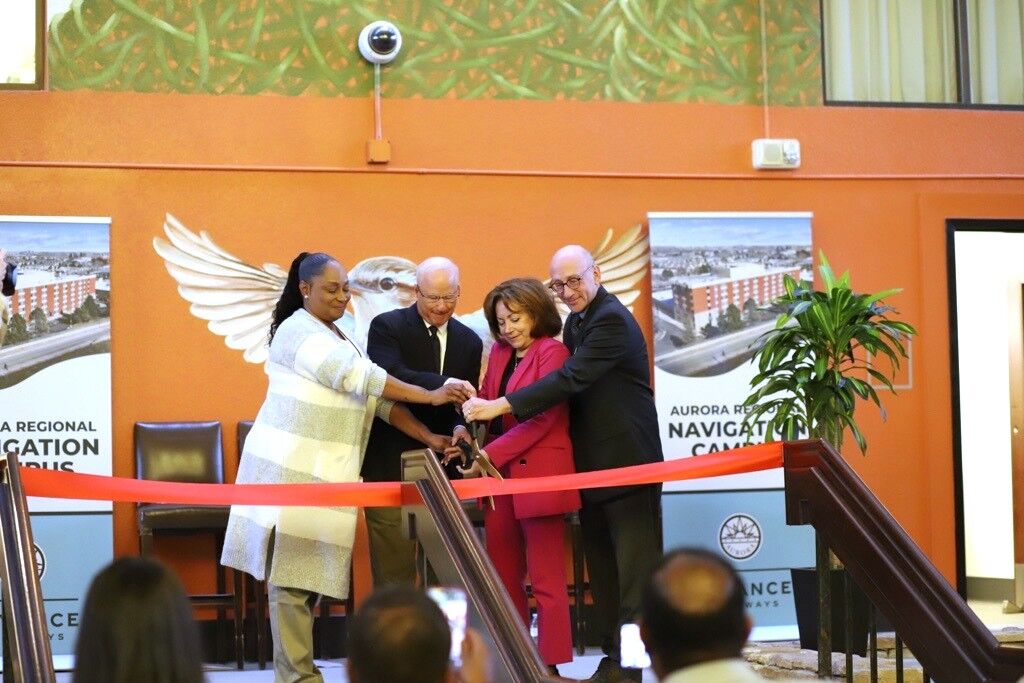New Mexico legislators rush to shore up safety net programs after federal cuts | OUT WEST ROUNDUP
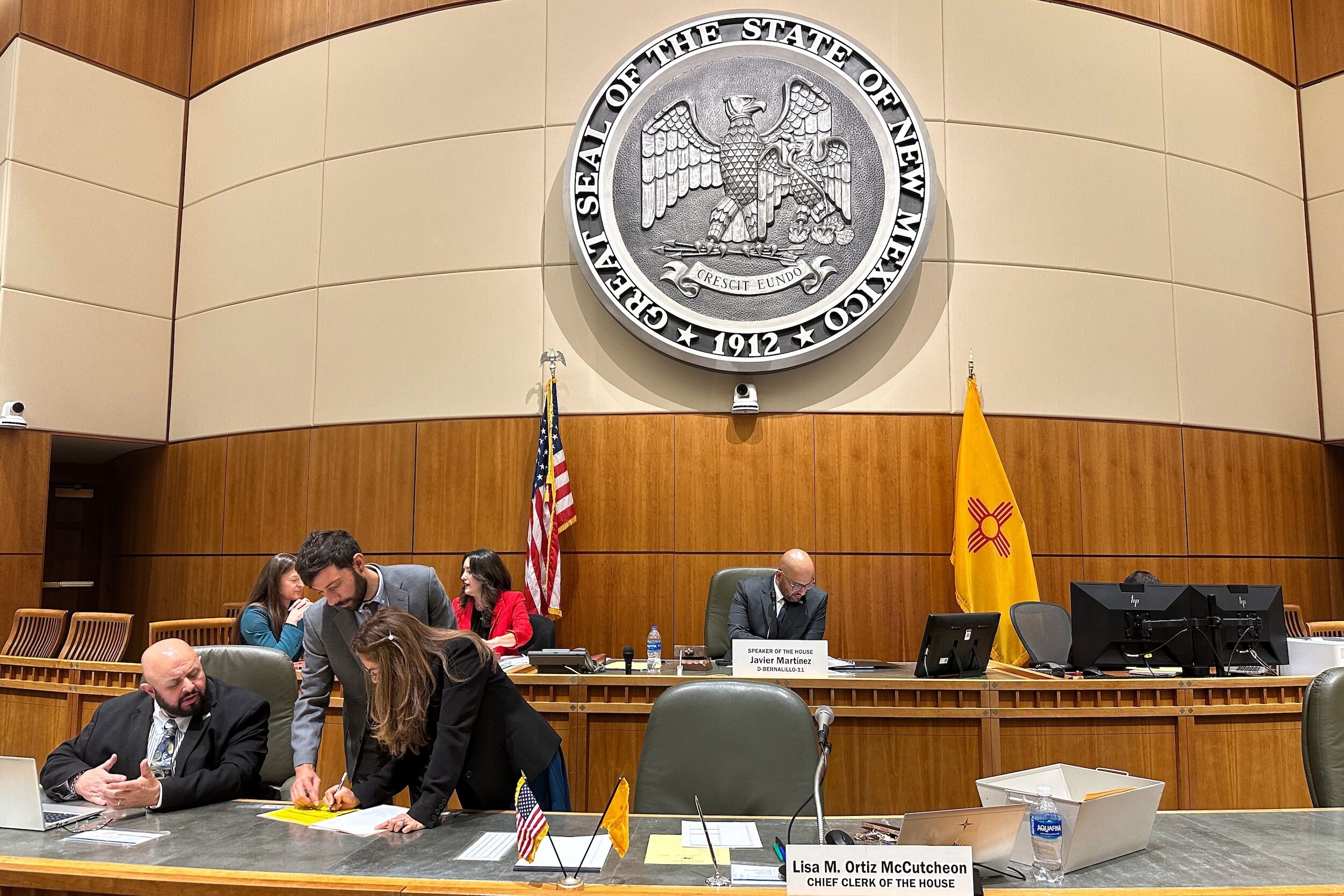
NEW MEXICO
Legislators address safety-net
SANTA FE — New Mexico legislators pushed to shore up safety-net spending on Oct. 1 in response to President Donald Trump’s spending and tax cuts, in a state with one of the highest enrollment rates for Medicaid and federal food assistance.
State legislators in the Democratic majority said they weren’t waiting for resolution of the federal budget standoff and government shutdown, as they advanced a bill to expand New Mexico’s own insurance subsidies on the Affordable Care Act exchange. Exchange subsidies are a sticking point of the standoff in Washington.
Lawmakers were also seeking new state spending of food assistance, while Gov. Michelle Lujan Grisham calls for grants to stabilize health care services in rural areas where clinics and hospitals often rely heavily on Medicaid.
“We’re not going to sit back and watch our health care system, our food support system, be devastated,” said Democratic state Senate Majority Peter Wirth of Santa Fe, at the start of a special legislative session.
Leading Democratic legislators also wanted to backfill federal spending cuts to public broadcasting. New Mexico could also become the latest state to break with the federal government on vaccine policy and recommendations.
Democrats including House Speaker Javier Martínez of Albuquerque have acknowledged that many federal health care changes don’t kick in until 2027 or later. But Martínez said that there is an urgent need to fund rural health care and offset other cuts.
New Mexico expects to lose about $200 million annually because of new federal tax cuts. But this fiscal year, it still has a large surplus thanks to booming oil production.
Republican legislators said big changes to Medicaid are still far away and that New Mexico should focus on reducing errors in benefit distributions.
Centuries-old map returned to Mexico
ALBUQUERQUE — A map drafted centuries ago as Spanish settlers solidified their presence in what is now Mexico and the southwestern United States has been returned to the Mexican government, marking the end of a yearslong effort to bring the historic document home.
FBI agents and Mexican officials were joined by historians and archivists on Sept. 23 at the consulate in Albuquerque for a celebratory handoff of the map. FBI Special Agent in Charge Justin Garris said it was more than simply ink on paper and Mexican officials described it as a significant part of their history and cultural heritage.
Patricia Pinzón, Consul of Mexico in Albuquerque, said the Camino Real de Tierra Adentro is a link between the cultures. The 1,600-mile route once served as a lifeline between Mexico City and Santa Fe and is depicted as a central feature that snakes through the map. The names of communities are artfully scripted along the route as other lines radiating from the route mark rivers.
The names of Native American communities are tucked into the dots and darkened scallops that represent the valleys, mesas and mountains that span what is now central New Mexico, Taos and areas near the Colorado border.
Archivists in Mexico City first realized the map was gone in 2011. It was among 75 pieces that were taken from records belonging to the national archives. The physical evidence included a scar inside one volume where pages had been removed.
It took years to work through international protocols and laws that relate to returning material stolen from other countries, but during that time Garrett said the library took great care to protect the map in a climate-controlled environment. It’s scribed on paper made of rag pulp.
WYOMING
Wind farm vote postponed
CHEYENNE — After nearly two hours of public comment, Laramie County planning commissioners voted on Sept. 11 to postpone a decision on the Laramie Range Wind Project.
Most community members who testified stated they oppose the project, which entails putting up to 170 turbines on more than 56,000 acres of unincorporated Laramie County land 20 miles northwest of Cheyenne.
Charlie Banke, development manager at Repsol Renewables North American and project lead of the wind farm, said the project has been in the works since 2018, and he anticipates construction would begin in 2027, with it fully operational by 2029.
He said the location is ideal for utility-scale wind system due to “high-quality” wind and an existing transmission line on the property.
Many of those who oppose the project are people who own ranches on the edge of the property. Some said the wind farm would lower the value of their ranches should they ever choose to sell them.
Gary Brown, a state lawmaker representing Wyoming House District 41, said he attended the meeting on behalf of many of his constituents, who own property adjacent to the proposed wind farm.
Charles Farthing, who owns Farthing Ranch Company, had the opposite viewpoint.
One of the principal landowners involved in the project, he supports the wind project because he sees it as a way to bring in additional income in future years, citing recent difficulties due to a severe drought.
Farthing also mentioned the recent boom in proposed data centers looking to build in Cheyenne, saying as the capital city’s economy continues to grow, there’s going to be a bigger need for electricity.
NEBRASKA
Feds to boost rail bridge inspectors
OMAHA — The Transportation Department is going to train 163 track inspectors to dramatically increase the number of people who know how to spot critical problems with railroad bridges, but the railroads themselves will still be responsible for inspecting their own bridges and the results will still be kept confidential.
Currently, there are only seven Federal Railroad Administration employees trained to assess bridges, although their primary responsibility is to review each railroad’s inspection plan to make sure they have a good plan in place and that won’t change. But this move will train significantly more people to spot structural problems on railroad bridges while they are out inspecting the tracks. Both federal and state track inspectors will be trained.
Jared Cassity, who is the National Safety Director for the nation’s largest rail union, SMART-TD, agreed that having more people trained to spot bridge problems is a good thing but said these inspectors still have more than 70,000 railroad bridges out there across the country to assess.
The Federal Railroad Administration said that the biggest railroads that deliver more than 90% of the nation’s freight have all been audited on a regular basis.


